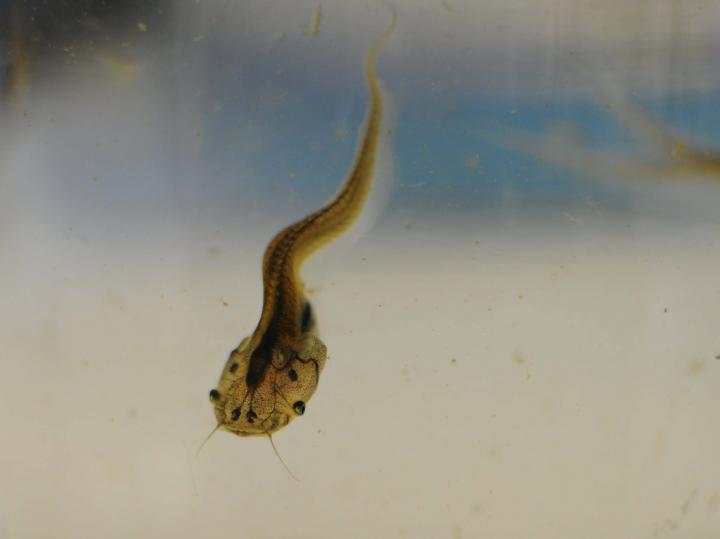- Your Product Type
- Your Study Type
- Aquatic Ecotoxicology
- Aquatic Invertebrates
- OECD 202: Daphnia sp., Acute Immobilisation Test
- OECD 211: Daphnia magna Reproduction Test
- OECD 235: Chironomus sp., Acute Immobilisation Test
- OECD 218/219: Sediment-Water Chironomid Toxicity Test Using Spiked Sediment/Spiked Water
- OECD 233: Sediment-Water Chironomid Life-Cycle Toxicity Test Using Spiked Water or Spiked Sediment
- OECD 225: Sediment-water Lumbriculus Toxicity Test Using Spiked Sediment
- OECD 242: Potamopyrgus antipodarum Reproduction Test
- OECD 243: Lymnaea stagnalis Reproduction Test
- Fish and other vertebrates
- OECD 203: Fish, Acute Toxicity Test
- OECD 215: Fish Juvenile Growth Study
- OECD 212: Fish, Short-term Toxicity Test on Embryo and Sac-fry Stages
- OECD 231: The Amphibian Metamorphosis Assay
- OECD 236: Fish Embryo Acute Toxicity Test
- OECD 210: Fish, Early-life Stage Toxicity Test
- OECD 229 Fish Short Term Reproduction Assay and OECD 230 21-day Fish Assay
- OECD 240 Medaka Extended One Generation Reproduction Test (MEOGRT)
- OECD 248: Xenopus Eleutheroembryonic Thyroid Assay
- OPPTS 850.1500: Fish Life Cycle Toxicity Test
- OÈCD 234 Fish sexual development test
- Aquatic plants
- Analytical Dose Verification
- Aquatic Invertebrates
- Chemistry
- Biodegradation Studies
- Analytical Chemistry Studies and Residues
- Physical-Chemical Properties Studies
- Storage Stability Studies
- OPPTS 830.6302, OPPTS 830.6303,and OPPTS 830.6304: Physical State, Colour and Odor at 20 °C and at 101.3 kPa
- EU A.1: Melting temperature/range
- EU A.2: Boiling temperature
- EU A.3: Relative density (liquids and solids)
- EU A.4: Vapour pressure
- EU A.5: Surface tension
- EU A.9: Flashpoint
- EU A.10: Flammability (solids)
- EU A.12: Flammability (contact with water)
- EU A.13: Pyrophoric properties of solids and liquids
- EU A.16: Relative self-ignition temperature for solids
- EU A.17: Oxidising properties
- OECD 114: Viscosity of Liquids
- Environmental Fate
- Transformation in Soil
- Transformation in Water
- Transformation in Manure
- Adsorption on Soil and Sewage Sludge
- Bioaccumulation and Bioconcentration
- Terrestrial Ecotoxicology
- Non-target Arthropods
- Non-target arthropod testing with the parasitic wasp (Aphidius rhopalosiphi)
- Non-target arthropod testing with the lacewing (Chrysoperla carnea)
- Non-target arthropod testing with the ladybird beetle (Coccinella septempunctata)
- Non-target arthropod testing with the predatory bug (Orius laevigatus)
- Non-target arthropod testing with the predatory mite (Typhlodromus pyri)
- Non-target arthropod testing with the rove beetle (Aleochara bilineata)
- Non-target arthropod testing with the carabid beetle (Poecilus cupreus)
- Non-target arthropod testing with the wolf spider (Pardosa spec.)
- Soil Organisms
- Honey Bees and other Pollinators
- OECD 213/214: Honey bees, Acute Oral and Acute Contact Toxicity Test
- OECD 245: Honey Bee (Apis Mellifera L.), Chronic Oral Toxicity Test (10-Day Feeding)
- OECD 237: Honey Bee Larval Toxicity Test, Single Exposure
- OECD 239: Honey Bee Larval Toxicity Test
- EPPO 170: Honey Bee Field Study – do plant protection products effect honey bee colonies?
- Oomen et al. 1992: Honey Bee Brood Feeding Study
- OECD 75: Honey Bee Brood Test under Semi-field Conditions in Tunnels
- OECD 246/247 Acute Oral and Contact Toxicity to the Bumblebee, Bombus terrestris L.
- Solitary Bee Acute Contact Toxicity Study in the Laboratory (Osmia sp.) Solitary Bee Acute Oral Toxicity Study in the Laboratory (Osmia sp.) (protocols for ringtests with solitary bees recommended by the non-Apis working group)
- SANTE/11956/2016 rev.9 Residue trials for MRL setting in honey
- Non-target plants
- OECD 208: Terrestrial Plant Test - Seedling Emergence and Seedling Growth Test
- OECD 227: Terrestrial Plant Test - Vegetative Vigour Test
- OCSPP 850.4100: Seedling Emergence and Seedling Growth
- OCSPP 850.4150: Vegetative Vigor
- EPPO PP 1/207(2): Efficacy evaluation of plant protection products, Effects on succeeding crops
- Field Studies
- Non-target Arthropods
- Ecological Modelling
- Quality Assurance
- Testing of Potential Endocrine Disruptors
- Aquatic Ecotoxicology
- News
- Company
- Career
- Contact
Testing of Potential Endocrine Disruptors
ibacon offers a wide variety of ecotoxicological studies for the testing of potential endocrine disruptors. For agrochemicals, biocides and industrial chemicals testing of endocrine activity is required in case the substance is assumed to have an endocrine disrupting potential. For those three groups of chemicals the classification of a substance as endocrine disruptor is a cut-off criterion, resulting in restriction of registration.
We have been performing many of these studies regularly also for other purposes and we have a vast know-how with the relevant species and test performance. Take your advantage and discuss your needs with us!

ibacon studies listed in the OECD Conceptual framework for Testing and Assessment of Endocrine Disrupting Chemicals, revised in 2017 (in "Guidance Document on Standardised Test Guidelines for Endocrine Disruption" of the OECD, Series on Testing and Assessment No 150)
Level 1 (Existing data and existing or new non-test information)
Physical and chemical properties
QSAR model predictions
TKTD modelling for making best use of existing data
Level 3 (In vivo assays providing data about selected endocrine mechanisms / pathways)
OECD 231 Amphibian Metamorphosis Assay
OECD 229 Fish Short Term Reproduction Assay
OECD 230 21 Day Fish Assay
OECD 248: Xenopus Eleutheroembryonic Thyroid Assay
Level 4 (In vivo assays providing data on adverse effects on endocrine relevant endpoints)
OECD 234 Fish Sexual Development Test
OECD 210 Fish Early-life Stage Toxicity Test
OECD 242 Potamopyrgus antipodarum Reproduction Test
OECD 243 Lymnea stagnalis Reproduction Test
OECD 218/OECD 219 Chironomid Toxicity Test
OECD 211 Daphnia Reproduction Test
OECD 222 Earthworm Reproduction Test
OECD 225 Sediment Water Lumbriculus Toxicity Test using Spiked Sediment
OECD 226 Predatory Mite Reproduction Test
OECD 232 Collembolan Reproduction Test in Soil
Level 5 (In vivo assays providing data about selected endocrine mechanisms / pathways)
OPPTS 850.1500 Fish Full Lifecyle Test
OECD 240 Medaka Extended One-generation Reproduction Test
OECD 233 Sediment Water Chironomid Life Cycle Toxicity Test
